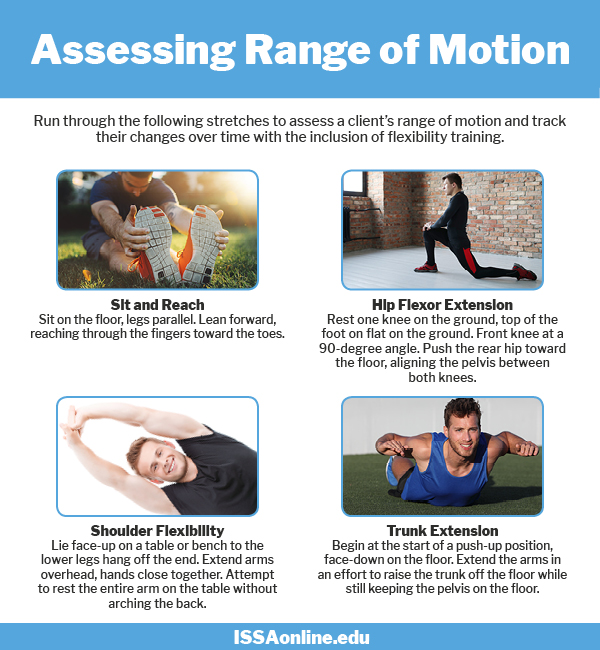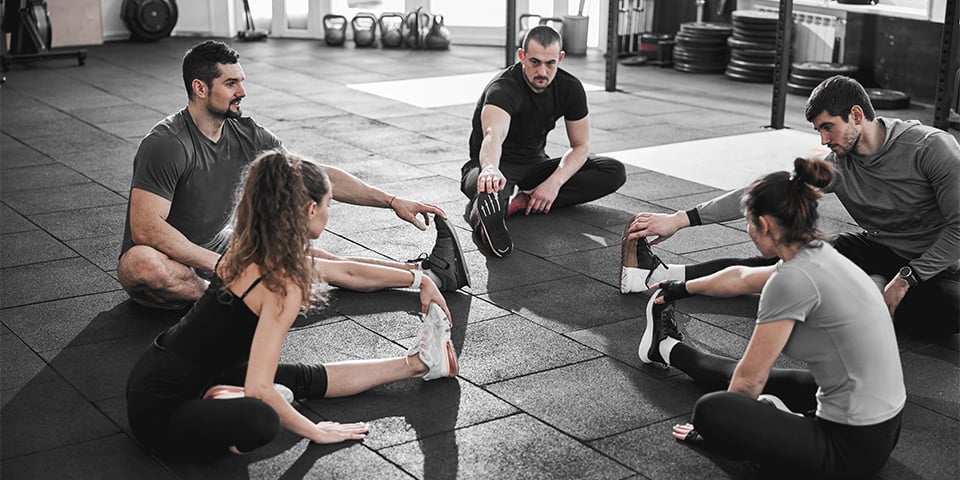If you’re looking to maximize your fitness potential, incorporating flexibility training into your routine is essential. Flexibility refers to the ability of your joints and muscles to move through a full range of motion. It plays a crucial role in improving athletic performance, preventing injuries, and enhancing overall fitness. By incorporating various types of flexibility exercises, such as static stretching and dynamic stretching, you can unlock numerous benefits for your body and mind. In this article, we will explore the importance of flexibility in fitness and discover the advantages of integrating flexibility training into your workout regimen.
Understanding the importance of flexibility in fitness

Flexibility is a crucial component of fitness that is often overlooked. By improving your flexibility, you can enhance your overall performance and reduce the risk of injuries. When your muscles and joints have a greater range of motion, you can move more efficiently and effectively during exercises and daily activities. Flexibility allows you to perform exercises with proper form and technique, maximizing the benefits of each movement. It also helps to prevent muscle imbalances and promotes better posture. So, don’t underestimate the importance of flexibility in achieving your fitness goals.
Benefits of incorporating flexibility training in your fitness routine
Incorporating flexibility training into your fitness routine offers numerous benefits that can improve your overall physical performance and well-being. By regularly engaging in flexibility exercises, you can experience:
- Increased range of motion, allowing you to move more freely and efficiently.
- Reduced risk of injuries by improving muscle flexibility and joint stability.
- Enhanced posture and alignment, promoting better body mechanics and preventing muscle imbalances.
- Improved muscle recovery and reduced muscle soreness after intense workouts.
- Better relaxation and stress relief through stretching techniques.
Including flexibility training in your fitness routine can help you achieve optimal results and maintain long-term fitness success.
Types of Flexibility Exercises
There are two main types of flexibility exercises that you can incorporate into your fitness routine: static stretching and dynamic stretching.
- Static stretching: This involves stretching a muscle to its maximum length and holding it for a certain period of time (usually around 15-30 seconds). It helps improve muscle flexibility and can be done before or after a workout to enhance muscle recovery and reduce soreness.
- Dynamic stretching: This involves moving your body through a full range of motion, using controlled movements. Dynamic stretches are typically done as part of a warm-up routine before a workout, as they help improve blood flow, increase body temperature, and enhance muscle activation.
Both static and dynamic stretching exercises are beneficial for improving flexibility and enhancing overall fitness performance.
Static stretching: Definition and benefits

Static stretching is a type of flexibility exercise that involves stretching a muscle to its maximum length and holding it for a certain period of time. This form of stretching helps improve muscle flexibility and range of motion. When you perform static stretches, you lengthen the muscle fibers, which increases blood flow to the muscles and improves the muscle’s ability to relax. Static stretching is commonly done after a workout to help reduce muscle soreness and enhance muscle recovery. Incorporating static stretching into your fitness routine can promote overall flexibility and contribute to improved fitness performance.
Dynamic stretching: Definition and benefits

Dynamic stretching is a form of flexibility exercise that involves moving the joints and muscles through a full range of motion. Unlike static stretching, which involves holding a stretch, dynamic stretching uses controlled movements to warm up the muscles and improve flexibility. This type of stretching helps to increase blood flow, warm up the body, and improve muscle coordination and performance. Dynamic stretching is particularly beneficial before a workout or sports activity as it prepares the body for physical exertion and reduces the risk of injury. Incorporating dynamic stretching into your fitness routine can help optimize your performance and enhance your overall fitness level.
Improved Range of Motion
Improved Range of Motion: Flexibility training plays a vital role in improving your range of motion. By regularly engaging in stretching exercises, you can increase the flexibility of your joints and muscles, allowing for a wider range of motion. This not only enhances your overall mobility but also improves your performance in activities that require flexibility, such as dance or martial arts. Some effective exercises to improve range of motion include leg swings, shoulder circles, and spinal twists. Incorporating these exercises into your flexibility routine will help you achieve greater flexibility and enhance your overall fitness level.
How flexibility training enhances joint mobility
Flexibility training is essential for enhancing joint mobility. Regular stretching exercises help to increase the flexibility and elasticity of the muscles and tendons around the joints, allowing for greater range of motion. By improving the mobility of your joints, you can perform everyday activities with ease and reduce the risk of joint-related injuries. Flexibility training also helps to maintain proper alignment of the joints, reducing the chances of joint stiffness and pain. Incorporating stretching exercises into your fitness routine will help you enhance joint mobility and overall physical performance.
Exercises to improve range of motion
To improve your range of motion, incorporate specific exercises into your routine. Here are some effective exercises to enhance your flexibility:
- Shoulder rotations: With a straight back, rotate your shoulders in a circular motion, both forward and backward.
- Leg swings: Hold onto a stable support and swing one leg forward and backward in a controlled manner, gradually increasing the height of the swing.
- Side lunges: Take a wide step to the side, bending one knee while keeping the other leg straight. Alternate sides to stretch your hips and inner thighs.
- Downward dog stretch: Start in a push-up position, then push your hips upward, creating an inverted V shape with your body. This stretch targets the back, hamstrings, and shoulders.
Remember to warm up before attempting these exercises and perform them in a pain-free range of motion.
Injury Prevention
One of the significant benefits of flexibility training is its role in preventing injuries during physical activity. By improving the range of motion in your joints and muscles, flexibility training helps reduce the risk of strains, sprains, and muscle tears. It also enhances muscular coordination and balance, which are essential for maintaining stability during movements. Incorporating stretching exercises into your routine before and after workouts can loosen up tight muscles and increase the flexibility of connective tissues, minimizing the chance of injury. Remember to hold each stretch for at least 15-30 seconds without bouncing to maximize its effectiveness.
The relationship between flexibility and injury prevention

By incorporating flexibility training into your fitness routine, you can significantly reduce the risk of injuries. Flexibility helps to improve the range of motion in your joints and muscles, making them more resilient and less prone to strains, sprains, and tears. When your muscles and connective tissues are more flexible, they can better absorb and distribute forces during physical activity, reducing the strain on specific areas of your body. Stretching regularly can also enhance muscular coordination and balance, which are crucial for maintaining stability during movements and preventing accidents. Stretching is a foundational step towards injury prevention in any fitness regimen.
Stretching techniques to reduce the risk of injuries
To reduce the risk of injuries during your fitness routine, it’s important to incorporate specific stretching techniques. Here are some effective techniques to consider:
- Dynamic stretching: Before your workout, engage in dynamic stretches that mimic the movements you’ll be doing. This helps to warm up the muscles and increase blood flow, reducing the risk of strains and muscle pulls.
- PNF stretching: Proprioceptive Neuromuscular Facilitation (PNF) stretching involves contracting and relaxing specific muscles to increase flexibility. This technique is particularly beneficial for increasing range of motion and preventing muscle imbalances.
- Foam rolling: Using a foam roller can help release tension in your muscles and fascia, improving flexibility and preventing injuries. Roll slowly over tight areas and spend extra time on any knots or trigger points.
- Stretching the opposing muscle groups: Many injuries occur due to muscle imbalances. Stretching the opposing muscle groups can help maintain proper muscle balance, reducing the risk of overuse injuries.
Remember to always warm up before stretching and perform each stretch properly to avoid injury.
Enhanced Performance

When it comes to enhancing your athletic performance, incorporating flexibility training into your fitness routine is key. Increased flexibility can improve your overall range of motion, allowing you to perform movements with greater ease and efficiency. This can lead to improved speed, agility, and power in activities like running, jumping, and lifting. By increasing your flexibility, you can also enhance your coordination and balance, which are crucial for many sports and physical activities. So don’t overlook the importance of flexibility in maximizing your performance potential. Start adding specific flexibility exercises to your training regimen today for better results tomorrow.
How Flexibility Training Improves Overall Athletic Performance

Flexibility training plays a crucial role in improving your overall athletic performance. By increasing your flexibility, you can enhance your range of motion, allowing you to move with greater efficiency and ease. This can lead to improved speed, agility, and power in activities such as running, jumping, and lifting. Additionally, increased flexibility can enhance your coordination and balance, which are essential for many sports and physical activities. Incorporating specific flexibility exercises into your training regimen can help you unlock your full athletic potential and take your performance to the next level.
Flexibility exercises to enhance specific movements
To improve specific movements and enhance athletic performance, incorporate targeted flexibility exercises into your routine. Here are some exercises to enhance specific movements:
- Hip flexor stretches: To improve hip mobility for activities like running or kicking, try kneeling hip flexor stretches.
- Hamstring stretches: Stretching the hamstrings can improve flexibility for activities like sprinting and jumping.
- Shoulder stretches: Increase shoulder flexibility for improved throwing or overhead movements with exercises like shoulder crossovers or arm circles.
- Quadricep stretches: Stretching the quads can benefit movements like squatting, lunging, and jumping.
Remember to warm up before performing these exercises and hold each stretch for 10-30 seconds, repeating on both sides.
Conclusion
Incorporating flexibility training into your fitness routine can greatly enhance your overall fitness and performance. By regularly engaging in static and dynamic stretching exercises, you can improve your range of motion, prevent injuries, and boost your athletic performance. Remember to focus on specific stretches that target the muscles and movements you want to improve. Flexibility training should be a consistent part of your workout routine to maximize its benefits. So, make sure to prioritize flexibility alongside strength and cardiovascular training for long-term success in your fitness journey.
Key takeaways on unlocking the benefits of flexibility in fitness
Flexibility training is a crucial component of any fitness routine. By regularly incorporating static and dynamic stretching exercises, you can improve your range of motion, reduce the risk of injuries, and enhance your athletic performance. Remember to focus on specific stretches that target the muscles and movements you want to improve. Flexibility training should be consistent and prioritized alongside strength and cardiovascular exercises for long-term success. So, make sure to unlock the benefits of flexibility by making it an integral part of your fitness journey.
Tips to incorporate flexibility training into your routine for long-term success

- Prioritize flexibility training alongside strength and cardiovascular exercises in your fitness routine.
- Set specific goals for your flexibility training, such as improving certain movements or increasing your range of motion.
- Schedule regular stretching sessions, at least 2-3 times per week, to maintain and improve flexibility.
- Incorporate both static and dynamic stretching exercises into your routine to target different muscles and movements.
- Warm up your muscles before stretching to prevent injury and enhance the effectiveness of your stretches.
- Listen to your body and avoid pushing yourself too far, as this can lead to injury.
- Seek guidance from a qualified fitness professional or physical therapist to ensure proper form and technique.
- Use props such as foam rollers or resistance bands to assist or deepen your stretches.
- Be consistent and patient with your flexibility training, as improvements may take time to see and feel.
- Stay motivated by tracking your progress and celebrating small achievements along the way.

